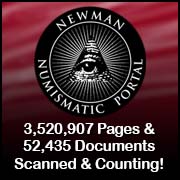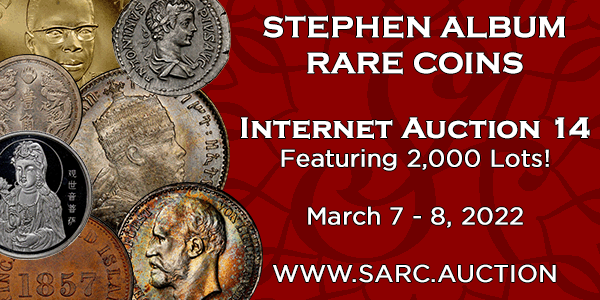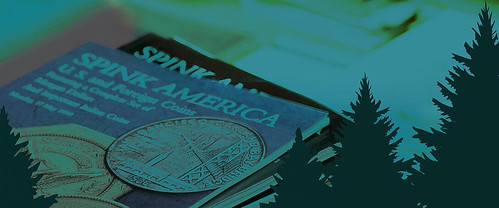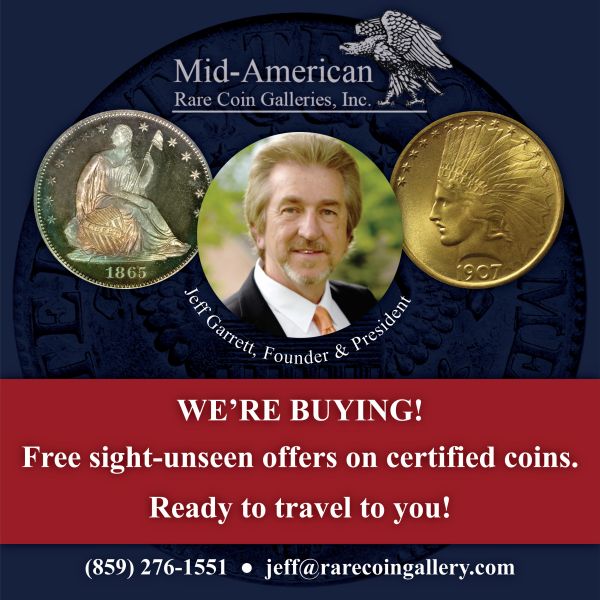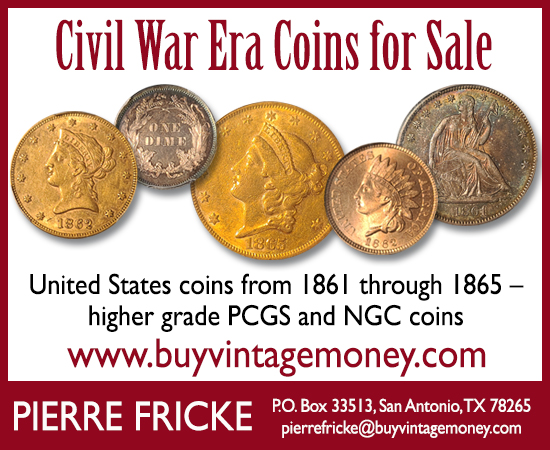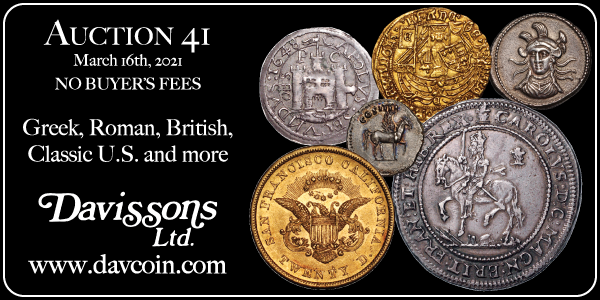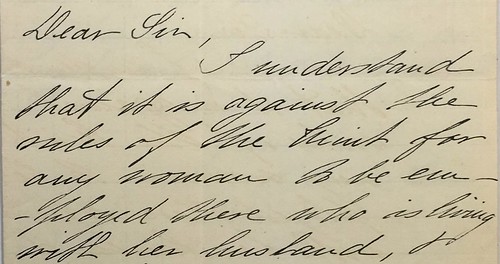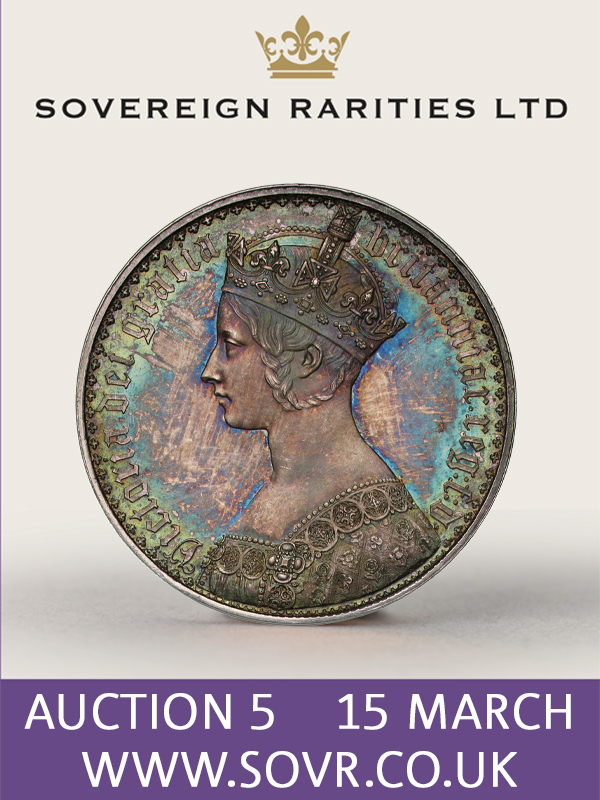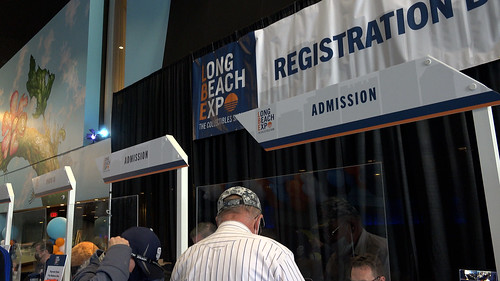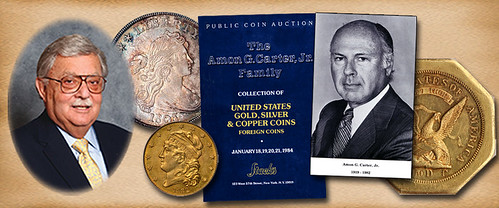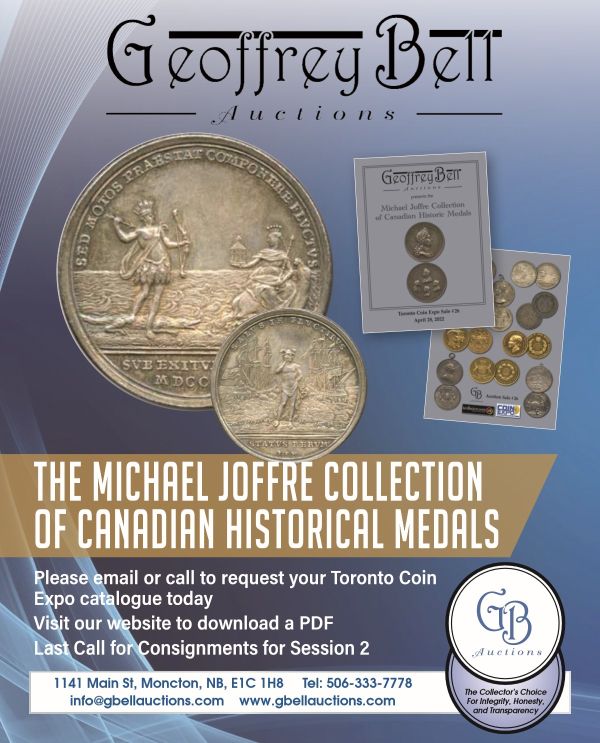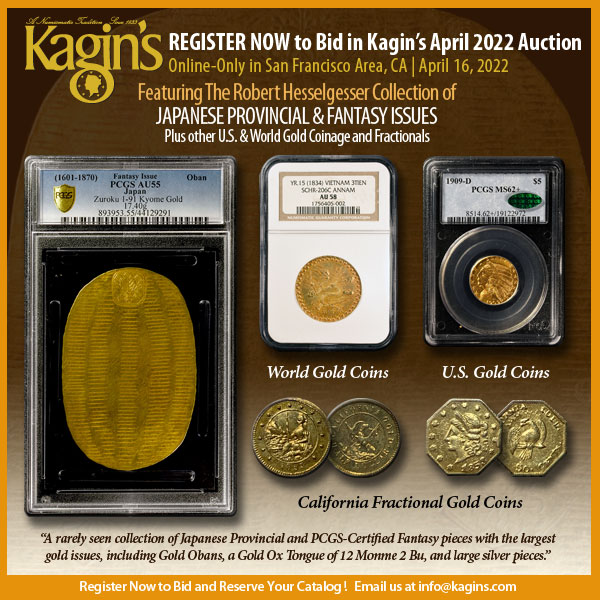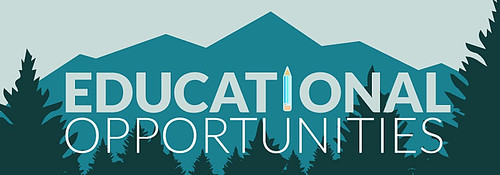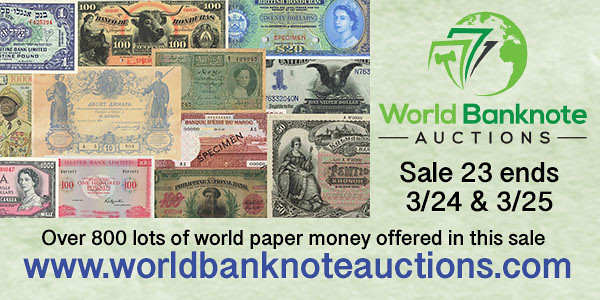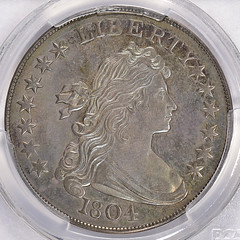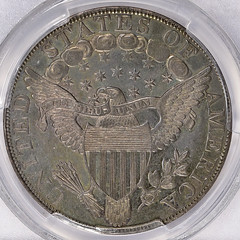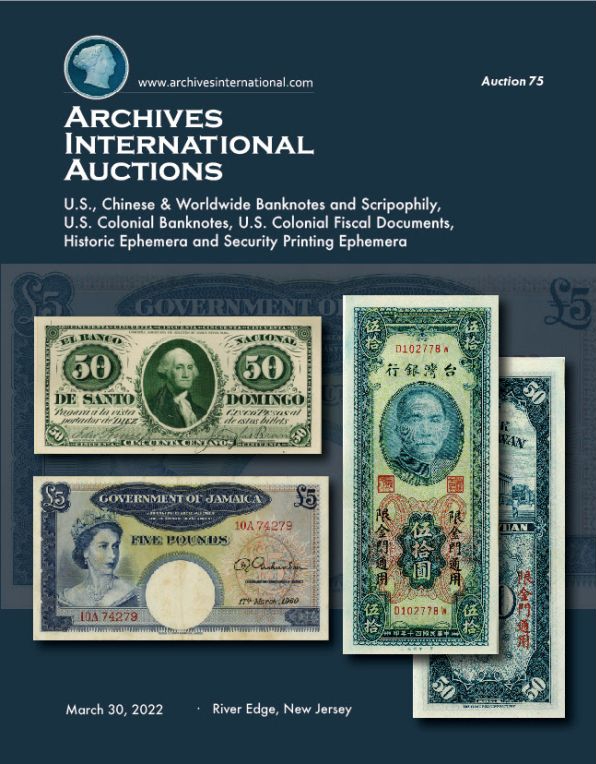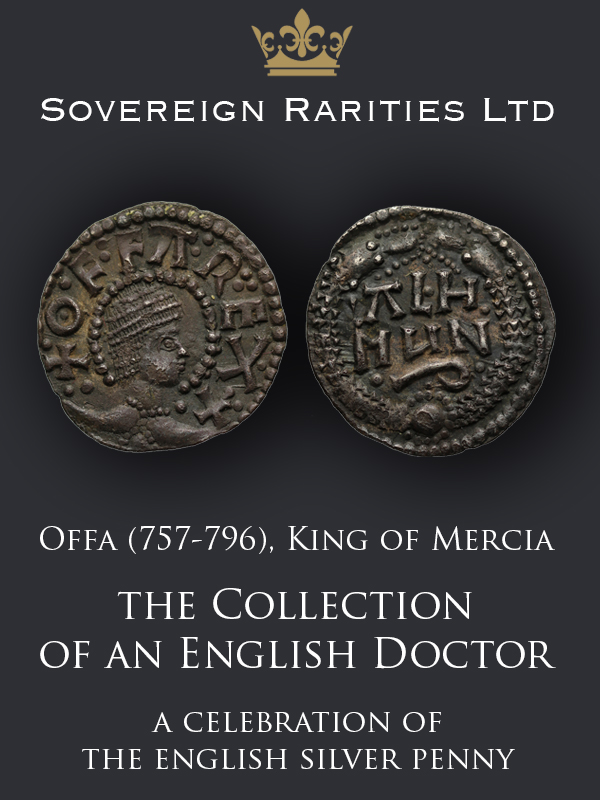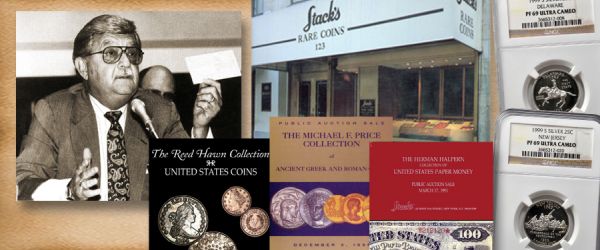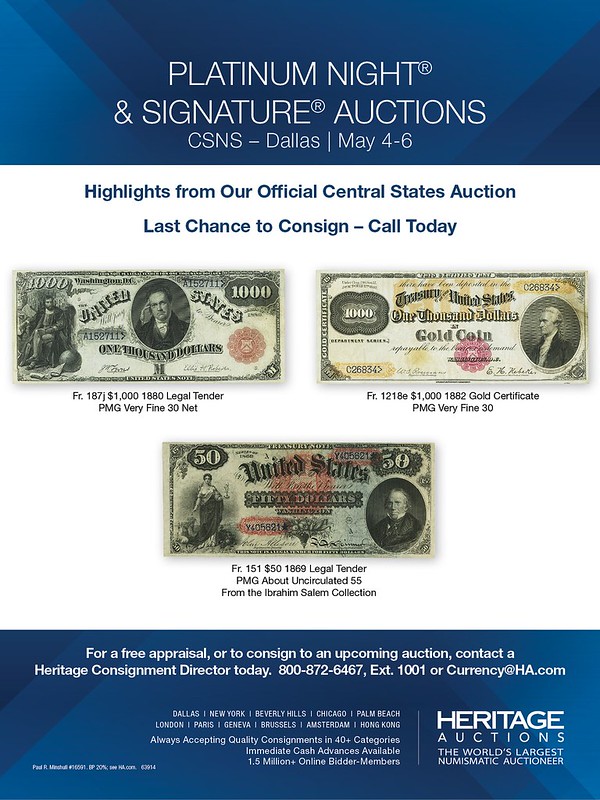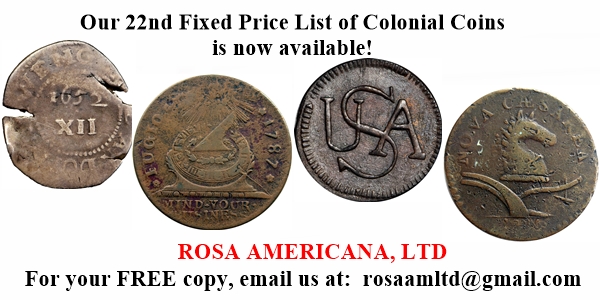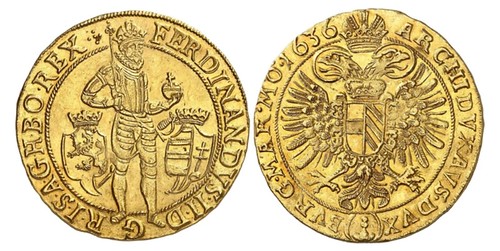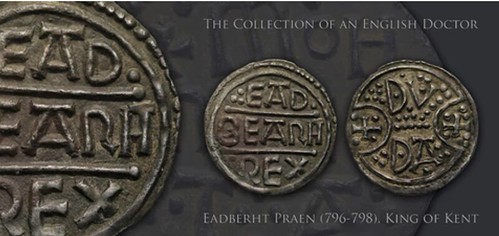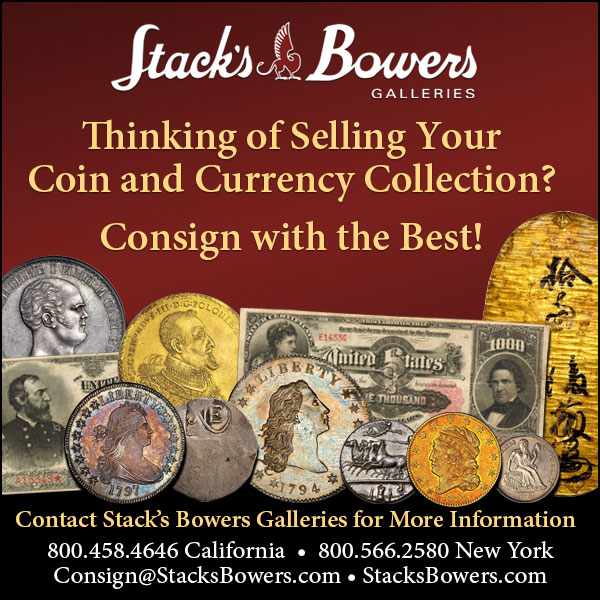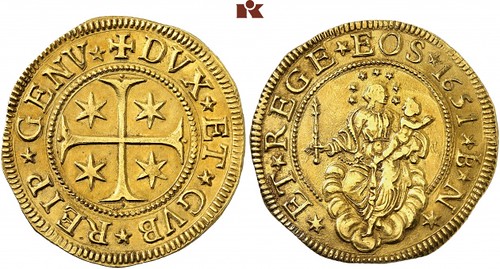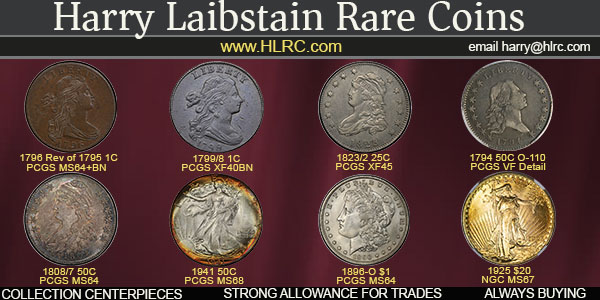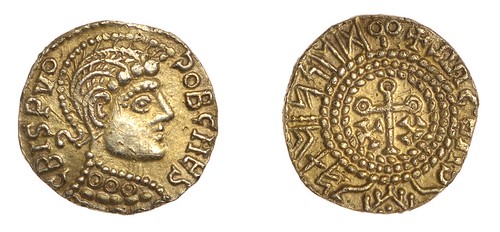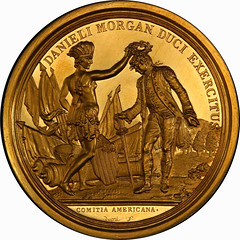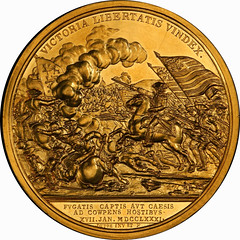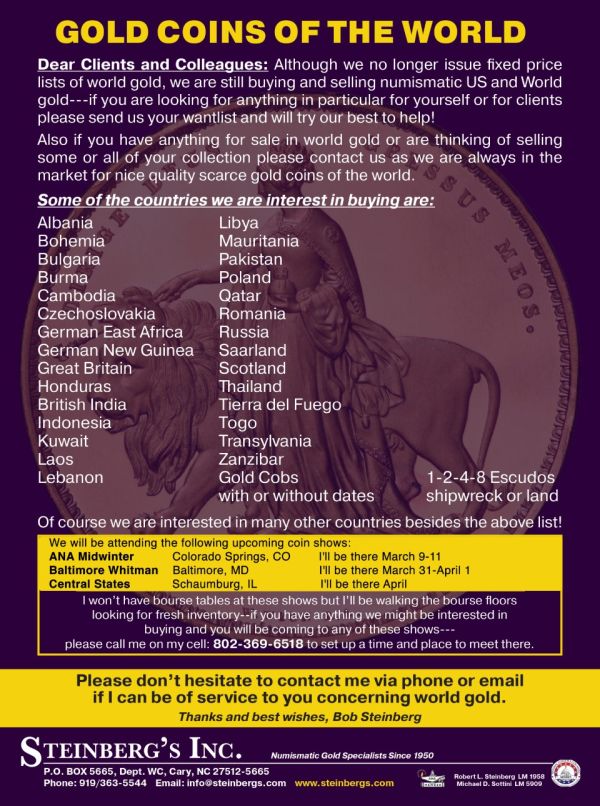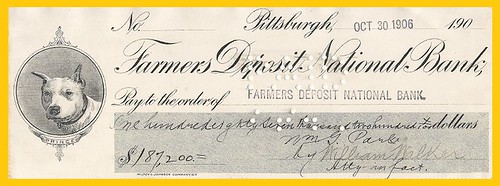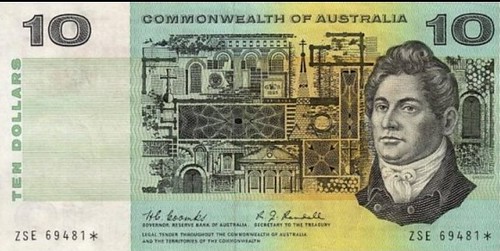
Visit our NBS Sponsors


About UsThe Numismatic Bibliomania Society is a non-profit association devoted to the study and enjoyment of numismatic literature. For more information please see our web site at coinbooks.org SubscriptionsThose wishing to become new E-Sylum subscribers (or wishing to Unsubscribe) can go to the following web page link MembershipThere is a membership application available on the web site Membership Application To join, print the application and return it with your check to the address printed on the application. Print/Digital membership is $40 to addresses in the U.S., and $60 elsewhere. A digital-only membership is available for $25. For those without web access, write to: Charles Heck, Treasurer AsylumFor Asylum mailing address changes and other membership questions, contact Chuck at this email address: treasurer@coinbooks.org SubmissionsTo submit items for publication in The E-Sylum, write to the Editor at this address: whomren@gmail.com BUY THE BOOK BEFORE THE COIN |
- WAYNE'S WORDS: THE E-SYLUM MARCH 6, 2022
- ANS LIBRARY DUPLICATES FOR SALE
- ANA LIBRARY 2022 NATIONAL MONEY SHOW SALE
- NEW BOOK: COIN-WEIGHTS OF EUROPE, VOLS 2-3
- NEW BOOK: WAYS AND MEANS
- NEW BOOK: THE FOUNDERS' FORTUNES
- MARRIED WOMEN UNWELCOME AT THE MINT
- VIDEO: SPRING 2022 LONG BEACH EXPO
- AUDIO: ABBY ZECHMAN INTERVIEW
- MORE NUMISMATICS IN TV AND MOVIES
- MORE ON VERNON M. JEPSON
- NOTES FROM E-SYLUM READERS: MARCH 6, 2022
- ANCIENT COINS WITH KENNETH BRESSETT
- 2022 NATIONAL MONEY SHOW EXHIBITS AND TALKS
- CONFERENCE: NETWORKS IN TRANSITION
- CENTRAL STATES U.S. RARITIES DISPLAY
- VOCABULARY TERM: HUB, HOB
- FRANCIS CARLOS HIGGINS (1867-1928)
- HARVEY STACK'S NUMISMATIC FAMILY, PART 116
- DON EVERHART'S CAREER IN COINS, PART 6
- ATLAS NUMISMATICS MARCH 2022 SELECTIONS
- COLLECTION OF AN ENGLISH DOCTOR, PART ONE
- SOVEREIGN RARITIES IDES OF MARCH SALE
- KüNKER SALTON COLLECTION GOLD COINS
- DIX NOONAN WEBB OFFERS RARE GOLD THRYSMA
- DAVISSONS AUCTION 41 ELECTROTYPES
- THE SWISS VRENELI
- GOLD DANIEL MORGAN COMITIA AMERICANA MEDAL
- PRINCE, THE WATCHDOG OF THE BANK
- THE MONEY FORGER HONORED ON A BANKNOTE
- CHINESE MAN SPENT HAND-DRAWN BANKNOTES
Click here to read the thin version on the web
Click here to subscribe
Click here to access the complete archive
To comment or submit articles, reply to whomren@gmail.com
Content presented in The E-Sylum is not necessarily researched or independently fact-checked, and views expressed do not necessarily represent those of the Numismatic Bibliomania Society.
WAYNE'S WORDS: THE E-SYLUM MARCH 6, 2022
 We have no new subscribers this week.
We now have 6,960 subscribers.
We have no new subscribers this week.
We now have 6,960 subscribers.
Thank you for reading The E-Sylum. If you enjoy it, please send me the email addresses of friends you think may enjoy it as well and I'll send them a subscription. Contact me at whomren@gmail.com anytime regarding your subscription, or questions, comments or suggestions about our content.
This week we open with numismatic library duplicate sales, three new books, updates from the Newman Numismatic Portal, numismatics in television and movies, and more.
Other topics this week include the Long Beach Expo, the ANA's National Money Show, Central States, Vernon Jepson, Ken Bressett, Frank Higgins, Don Everhart, auction and fixed price previews (numismatic eye candy!), the Swiss Vrneli, the Daniel Morgan Comitia Americana medal in gold, and the forger honored on a banknote.
To learn more about military tokens, coin weights, unmarried women at the Mint, Greenbacks, Abby Zechman, Jerry Buss, the room wallpapered with stamps, Dutch-Israel gold fantasy coins, the Little Tramp, the 1894-S dime, hubs and hobs, the March of Dimes commemorative, electrotypes, and Prince the bank watchdog, read on. Have a great week, everyone!
Wayne Homren
Editor, The E-Sylum
ANS LIBRARY DUPLICATES FOR SALE
The American Numismatic Society is continuing its eBay sales of library duplicates. Here's the latest announcement. -Editor
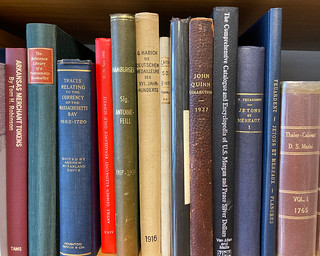 Lots of books, auction catalogs, and fixed price lists will be coming up for sale in March and beyond as we continue to sell duplicates to benefit the ANS Library. These include classic works, like Feuardent on jetons (1904–1915) and Madai on thalers (1765–1774), as well as early catalogs from Ciani, Thieme, Naville, Scott, Ratto, Schlessinger, Ars Classica, and Hamburger. So keep an eye on our eBay store, or, better yet, register and save your searches so you are notified when items you want are listed.
Lots of books, auction catalogs, and fixed price lists will be coming up for sale in March and beyond as we continue to sell duplicates to benefit the ANS Library. These include classic works, like Feuardent on jetons (1904–1915) and Madai on thalers (1765–1774), as well as early catalogs from Ciani, Thieme, Naville, Scott, Ratto, Schlessinger, Ars Classica, and Hamburger. So keep an eye on our eBay store, or, better yet, register and save your searches so you are notified when items you want are listed.
ANA LIBRARY 2022 NATIONAL MONEY SHOW SALE
The American Numismatic Association Dwight N. Manley Library will hold a sale of duplicates during the upcoming National Money Show in Colorado Springs. CO. -Editor
NEW BOOK: COIN-WEIGHTS OF EUROPE, VOLS 2-3
Paul (and Bente Withers) of Galata in Wales write:
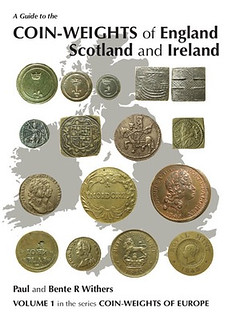 "Over the last two years we have been working on a dream project, that of writing a work on the coin-weights of Europe. This began with A guide to the coin-weights of England, Scotland and Ireland
which introduces the subject to coin collectors who may be unfamiliar with coin-weights, and others who encounter them and are puzzled by them. This is a guide, rather like the Stanley Gibbons simplified stamp catalogue; wherein the major types are listed, but not the minor varieties.
"Over the last two years we have been working on a dream project, that of writing a work on the coin-weights of Europe. This began with A guide to the coin-weights of England, Scotland and Ireland
which introduces the subject to coin collectors who may be unfamiliar with coin-weights, and others who encounter them and are puzzled by them. This is a guide, rather like the Stanley Gibbons simplified stamp catalogue; wherein the major types are listed, but not the minor varieties.
Reference numbers are identical with those used in our 1993 publication British Coin-Weights. Previously unpublished items are given new numbers in curly brackets {xxx} The two-page Glossary section is designed for the use of a wide range of readers of many nationalities, some of whom may have a limited English vocabulary, and perhaps also limited knowledge of coins and numismatic terms. It is also a listing of the more common words relating to coin-weights, in English, French, and German. Finally, there is a two-page index.
Due to the advances in typesetting and printing since 1993 this we are able to offer this 98 page, A4 paperback, illustrated in colour throughout, plus some b&w photos and line drawings. Well over 650 items are illustrated life-size, with more than 20 enlargements of details, and 19 illustrations of boxes, labels and rocker balances, etc., for just £22.00 plus p & p.
Now, within a few weeks of publication the final two volumes in the set are undergoing the last touches of proof-reading and preparation, not exactly an easy task because they have been achieved with the co-operation of many people and institutions.
Much previously un-published information is available here.
The first of the two volumes begins with an appreciation of Adolphe Dieudonné the exceptional French numismatist who wrote the first book on coin-weights very nearly a century ago. Its publication also coincides with our recent golden wedding, and my 80th birthday which will be on the same day as the Queen celebrates her birthday in her record-breaking reign."
NEW BOOK: WAYS AND MEANS
Last week I almost published a Wall Street Journal review of a new book by Roger Lowenstein on the financing of the U.S. Civil War. I decided not to because the review of Ways and Means had nothing to say about the numismatics of the war. But in a new article this week, an excerpt from the book, Lowenstein discusses the creation of Greenbacks - "How Paper Money Saved the Union." Here's an excerpt. -Editor
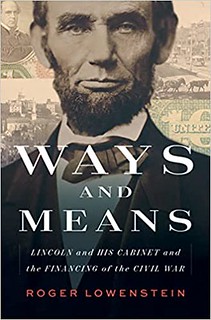 Early in the Civil War, a New York congressman named Elbridge Spaulding had a terrible thought. What if the government were to print pieces of paper and call them money? Paper bills existed, of course, issued by scores of private banks. But they were only IOUs; they had no legal standing. As such, merchants and others could refuse them or mark them down.
Early in the Civil War, a New York congressman named Elbridge Spaulding had a terrible thought. What if the government were to print pieces of paper and call them money? Paper bills existed, of course, issued by scores of private banks. But they were only IOUs; they had no legal standing. As such, merchants and others could refuse them or mark them down.
Spaulding meant for his paper to be legal tender
—valid for all debts and obligations, like gold and silver. It would be paper that none could refuse. This would give the Lincoln government what it desperately needed even more than troops—a currency to pay for the war.
NEW BOOK: THE FOUNDERS' FORTUNES
Another new book discusses the finances of America's founding fathers. There may be nothing numismatic here (review, anyone?), but it's nice to see a Virginia halfpence on the cover. -Editor
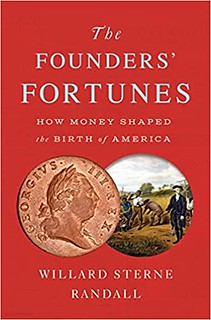 Historian Randall (Unshackling America) explores in this intriguing yet unsatisfying survey how the founding fathers' personal financial circumstances helped chart the course of the American Revolution. Delving into the business interests and economic considerations of George Washington, Benjamin Franklin, John Adams, Thomas Jefferson, and others, Randall notes that almost all of Connecticut's delegation to the Second Continental Congress in 1775 were land speculators, motivated in no small part by King George III's decree barring them from profiting from the fur trade. He also points out that the resistance movement in Massachusetts was bankrolled by John Hancock, whose merchant empire was threatened by English taxes, and that Benjamin Franklin, contrary to his
Historian Randall (Unshackling America) explores in this intriguing yet unsatisfying survey how the founding fathers' personal financial circumstances helped chart the course of the American Revolution. Delving into the business interests and economic considerations of George Washington, Benjamin Franklin, John Adams, Thomas Jefferson, and others, Randall notes that almost all of Connecticut's delegation to the Second Continental Congress in 1775 were land speculators, motivated in no small part by King George III's decree barring them from profiting from the fur trade. He also points out that the resistance movement in Massachusetts was bankrolled by John Hancock, whose merchant empire was threatened by English taxes, and that Benjamin Franklin, contrary to his Poor Richard
persona, became wealthy by investing the profits from his printing and publishing business in Philadelphia real estate.
MARRIED WOMEN UNWELCOME AT THE MINT
The latest addition to the Newman Numismatic Portal is a letter from Mint Superintendent Snowden about a rule barring married women from working there. Project Coordinator Len Augsburger provided the following report. -Editor
Married Women Unwelcome at the Mint
While it is well-known that the U.S. Mint employed women as adjusters from its earliest days, it seems that this practice was limited to unmarried women only. An 1880 letter from Mrs. A. C. D. Lewis to the Philadelphia Mint Superintendent A. Louden Snowden notes that Lewis is resigning her adjuster position, as it is against the rules of the Mint for any woman to be employed there who is living with her husband.
Lewis notes that she had been warned accordingly and submits a forwarding address for any wages due up to the time of my marriage."
Link to July 9, 1880 letter from Lewis to Snowden:
https://nnp.wustl.edu/library/book/611680
Link to U.S. Mint general correspondence (National Archives record group 104, entry 1) on Newman Portal:
https://nnp.wustl.edu/library/archivedetail/515202
VIDEO: SPRING 2022 LONG BEACH EXPO
These are selections from the David Lisot Video Library that feature news and personalities from the world of coin collecting. David has been attending coin conventions since 1972 and began videotaping in 1985. The Newman Numismatic Portal now lists all David's videos on their website at:
https://nnp.wustl.edu/library/multimediadetail/522852
Here's one on the recent Long Beach show. -Editor
THE BOOK BAZARRE
AUDIO: ABBY ZECHMAN INTERVIEW
The Coin World Podcast recently featured an interview with Abby Zechman. Check it out. -Editor
The Coin World Podcast co-hosts interview Abigail Zechman, a hobo-nickel-carving Young Numismatist recently elected to the board of FUN and discuss, among other things, a 2018 issue of Coin World.
MORE NUMISMATICS IN TV AND MOVIES
Here are more reader notes on numismatics in film, television and on the stage. -Editor
Brad Karoleff writes:
"This weekend I was channel surfing and came upon a movie, "12 Mighty Orphans" about a 1930's orphanage football team in Texas. It is based on a true story and has a couple interesting numismatic connections!
"During the movie there are a few scenes featuring Treat Williams playing.....Amon Carter! In one of them he is betting on the football game and a $50 National Currency note is shown trading hands.
"Overall the movie is a little corny with the fake football scenes but it does convey the feelings of the time and, at the end, a review of the characters tells us about their life stories after graduating from the Masonic Orphanage school."
MORE ON VERNON M. JEPSON
Julia Casey writes:
"I saw Jerome Nashorn's research on Vernon M. Jepson and the eBay listing for the First American Coin Collector medal. When I searched for Vernon Jepson in the newspaper databases I did not find mention of him collecting coins, but I learned he was a collector of gourds and stamps. Here are the stories."
NOTES FROM E-SYLUM READERS: MARCH 6, 2022
Reader Kudos
David Derrick writes:
"Thank you for continuing to post The E-Sylum. Great topics and great reading. Knowledge is everything, especially in numismatics and related."
You're welcome! It's always fun to put together. Something new every day. -Editor
Other topics this week include Bookseller David Edmunds. -Editor
ANCIENT COINS WITH KENNETH BRESSETT
As noted last week, hobby legend Ken Bressett, author and Red Book Editor Emeritus will be at the ANA National Money Show in Colorado Springs, March 10–12, 2022. Here's a note from Whitman Publications on his latest book. -Editor
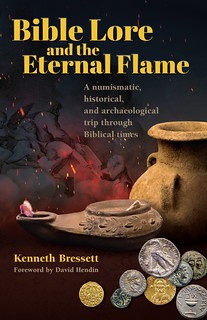 Kenneth Bressett will autograph his new book Bible Lore and the Eternal Flame at the
American Numismatic Association's National Money Show in Colorado Springs, March 10,
2022. After that debut the 224-page hardcover volume will be available from bookstores
and hobby shops and online (including at Whitman.com). Here, Whitman publisher Dennis
Tucker discusses how the book came to be, its context among other numismatic
publications, and how it was developed.
Kenneth Bressett will autograph his new book Bible Lore and the Eternal Flame at the
American Numismatic Association's National Money Show in Colorado Springs, March 10,
2022. After that debut the 224-page hardcover volume will be available from bookstores
and hobby shops and online (including at Whitman.com). Here, Whitman publisher Dennis
Tucker discusses how the book came to be, its context among other numismatic
publications, and how it was developed.
2022 NATIONAL MONEY SHOW EXHIBITS AND TALKS
There are a number of eductional opportunities awaiting visitors to the ANA National Money Show in Colorado Springs, CO March 10-12, 2022. -Editor
CONFERENCE: NETWORKS IN TRANSITION
A conference organized by Princeton's FLAME project is coming up later this month. NOTE - it is both in-person and virtual, so interested parties can attend via Zoom. -Editor
Title:
Networks in Transition: Monetary Exchange from Antiquity to the Middle Ages
When/Where:
March 18th, 12:30pm–5:45pm (East Pyne 010)
March 19th, 8:30am–5:00pm (East Pyne 010)
March 20th, 9:00am–1:00pm(Firestone C10H)
CENTRAL STATES U.S. RARITIES DISPLAY
GreatCollections is sponsoring a display of U.S. rarities at the upcoming Central States show. Here's the announcement. -Editor
Four of the most famous United States rare coins with a combined face value of only $1.16 but insured now for $19 million will be displayed together for the first time at the Central States Numismatic Society convention in the Chicago suburb of Schaumburg, Illinois, April 28-30, 2022.
THE BOOK BAZARRE
VOCABULARY TERM: HUB, HOB
Here's another entry from Dick Johnson's Encyclopedia of Coin and Medal Terminology. -Editor
Hub, Hob. A die of positive relief used for making a working die or dies. Hubs are always the opposite relief of the striking die. They are a method of reproducing or trans- ferring a three-dimensional image from one hard surface into another. As such, hubs and hubbing are a method of producing working dies in quantity for long production runs, or an insurance that a new die can be easily made should any working die break. Hubs can be the entire design of one side of a coin or medal, or it can also be a portion of the design – as a portrait or device – and as such is similar to a puncheon.
FRANCIS CARLOS HIGGINS (1867-1928)
American Numismatic Biographies author Pete Smith submitted this article on American Numismatic Association personality Frank C. Higgins. Thanks! -Editor
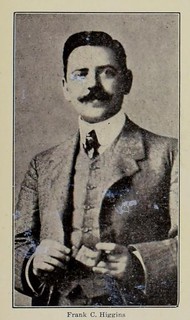 If events had played out a little differently, Frank C. Higgins might be in the ANA Hall of Fame.
If events had played out a little differently, Frank C. Higgins might be in the ANA Hall of Fame.
Francis Carlos Higgins, more commonly known as Frank C. Higgins, was born in Philadelphia on January 7, 1867. His parents were Paul Lajus Higgins (1842-1926) and Clarissa Enos (1840-1921). They were divorced and both remarried.
At the time of the 1880 Census, Frank was living in Germantown, Pennsylvania, with his mother and employed as an office clerk at age 13. He attended Shattuck Military Academy at Faribault in Minnesota.
HARVEY STACK'S NUMISMATIC FAMILY, PART 116
Stack's Bowers has a backlog of Harvey Stack's numismatic memoir articles and will continue publishing them. In this one Harvey discusses the year 1994 and the noncirculating issues of the U.S. Mint. -Editor
The year 1994 continued the upward trend in numismatics that had begun with the recovery from the Black Monday stock market "crash" of November 1987. This recovery was helped by the fact that the precious metals markets held their value, so coins that contained gold and silver may have lost a little value, but in general were considered a "good hold." During times when the stock market was way down, coins made of precious metals were considered by many to be a store of value and a better source for investment.
In addition, collectors who had the means used this time as an opportunity to add to their collections while prices were down slightly, and so continued to be good clients both through our auctions and in our retail sales. Many important collections were created and developed during this period. Buying and selling of coins among dealers also became a good business.
DON EVERHART'S CAREER IN COINS, PART 6
With permission, we're republishing excerpts of former U.S. Mint Sculptor-Engraver Don Everhart series published by CoinWeek beginning in April 2018. -Editor
In 2015 I began working on designs for the March of Dimes Commemorative Silver Dollar program. In this case, as in most commemoratives the mint produces, a percentage of the profits the mint makes on the coin would be given back to the recipient, the March of Dimes.
The obverse design that was ultimately chosen featured a well-executed double portrait of Franklin Roosevelt and Jonas Salk, who developed a vaccine to fight polio. Designed by Artistic Infusion Program artist Paul Balan and beautifully sculpted by staff engraver Mike Gaudioso.
ATLAS NUMISMATICS MARCH 2022 SELECTIONS
Atlas Numismatics has updated their website with 542 new coins, medals, and tokens at fixed prices. Here's the press release. Some gorgeous pieces here. -Editor
Choice Mint State Bohemia 10 Ducats
COLLECTION OF AN ENGLISH DOCTOR, PART ONE
Sovereign Rarities in London is offering a collection of early Anglo-Saxon coins are fixed prices. Here's the press release, passed along by Steve Hill. Thanks. -Editor
We at Sovereign Rarities have been very excited and privileged to receive the first part of The Collection of an English Doctor
to offer for sale through our website
www.sovr.co.uk at fixed prices.
Formed by a very discerning collector of many years standing, this English collection formed
diligently over the last few years, aims to illustrate the history of the English silver Penny, with the
criteria being to collect as many mints and moneyers as possible in the time that was allowed.
The first part covers the early Anglo-Saxon period from when the Sceattas series ends with the first
transitional piece of Beonna of East Anglia, and continues through the various Kings of the
Heptarchy, with such famous names as Offa and Alfred the Great, as well as some Archbishop issues
and more unusual reverse types and mints. The collection continues into Kings of all England with
Aethelstan, Eadmund, Eadred, Eadwig and Edward the Martyr, with part one signing off with
Aethelred II the unready
with the whole part consisting of 83 good quality coins.
It can be difficult to pick highlight pieces especially when there are so many in such a large grouping, but the rarest and some unique pieces are clearly the most interesting, a top twenty as follows in Kingdom order:
SOVEREIGN RARITIES IDES OF MARCH SALE
Sovereign Rarities has also teed up an auction sale featuring an ‘Eid Mar' Denarius. -Editor
Sovereign Rarities are pleased to present to the numismatic community their fifth auction - taking place on the ‘Ides of March', 15th March 2022 - consisting of 223 lots of Ancient, Historic and Modern British and World Coins and Commemorative Medals. The sale features many choice Ancient, British and world coins, and pre-bidding is open now at www.sovr.co.uk until the live auction on the day.
The sale begins with lots 1-20, Ancient coins, with a superb run of graded gold and silver Greek and Roman material. Lot 1 is perhaps the highlight of this section, a gold stater of Carthage dating from 350-320 BC, graded by NGC as 5/5, 4/5. However, the prize for the most intriguing coin goes to lot 14, a necklace of 13 Roman Denarii including the infamous ‘Eid Mar' Denarius struck by Brutus on the assassination of Julius Caesar in 44 BC. Ironically, Brutus's coin has been stabbed three times!
KüNKER SALTON COLLECTION GOLD COINS
Here are some highlights of the Künker special auction 362: "The Salton Collection - European Gold Coins and Medals". Some amazing coins here. -Editor
Lot number 1125
Italy.
Republic of Genua.
(Dogi Biennali), 1528-1797.
5 Doppie 1651.
Very rare. Almost extremely fine.
Estimate: 20.000,00 euros
DIX NOONAN WEBB OFFERS RARE GOLD THRYSMA
This Dix Noonan Webb press release recounts the discovery of a rare gold shilling. -Editor
DAVISSONS AUCTION 41 ELECTROTYPES
In an email to clients this week, Allan Davisson discussed some interesting electrotypes in the upcoming Davissons Auction 41. -Editor
High quality replicas of historic coins occupy an interesting niche in the hobby. There's something egalitarian about anyone being able to buy a convincing approximation of a dekadrachm, for instance, but as replicas become more convincing their potential for deception (whether originally intended for such or not) begins to tarnish the experience. That is, unless, the examples were simultaneously made to the highest specifications and in a manner that leaves them impossible to confuse with the real thing.
THE SWISS VRENELI
Dr. Jonas Emmanuel Flueck of Lugdunum GmbH in Switzerland has published a great web article on the famous Swiss national gold coin, the Vreneli. It is the product of months of work inclusing research at the Swiss Federal Archives to find detailed information about the history and background of the coin. -Editor
Switzerland's best-known and at the same time least-known coin
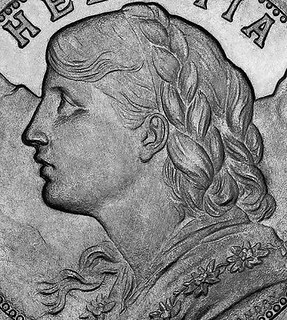 It is hardly an exaggeration to say that every Swiss person, young or old, knows what a Vreneli is and that almost every Swiss household has at least one copy of this gold coin. There are many unexpected stories and special features in this coin that are unknown to the layman and make this coin particularly exciting.
It is hardly an exaggeration to say that every Swiss person, young or old, knows what a Vreneli is and that almost every Swiss household has at least one copy of this gold coin. There are many unexpected stories and special features in this coin that are unknown to the layman and make this coin particularly exciting.
Worldwide, the Vreneli is one of the few old coins that has remained popular in a modern society. Its endearing nickname ‘Vreneli', which is still used today as it was 100 years ago, further underlines this unique relationship. Perhaps this special relationship in the unconscious can also be explained by the fact that the Vreneli was presented to good children in Switzerland for generations with benevolence as a godfathers' gift for baptism and as a Christmas or birthday present. For the relationship is quite different in countries where gold coins had to serve as ‘nest eggs' in times of war and crisis. In other words, in times that we would rather leave behind and forget today.
GOLD DANIEL MORGAN COMITIA AMERICANA MEDAL
Last week we got a hint of an amazing discovery being offered by Stack's Bowers in their Spring 2022 sales - the only gold Comitia Americana medal in private hands. Cataloguer John Kralvevich Jr. kindly provided a copy of his lengthy lot description. With permission, here is an excerpt. -Editor
When a national treasure from the American Revolution was stolen in a brazen bank heist in 1818, a dutiful heir involved former President Thomas Jefferson and lobbied for an Act of Congress to replace it. This is the medal his decades of persistence achieved, the only example struck, the only gold Comitia Americana medal in private hands, and the only Congressional Gold Medal ever authorized by two separate Acts of Congress. Struck at the Philadelphia Mint in 1839 from dies fashioned in Paris, it is utterly unique. It is offered, here, at auction for the very first time, a majestic testament in gold to the debt owed this nation's first military heroes and the efforts to honor their legacy.
PRINCE, THE WATCHDOG OF THE BANK
Perhaps Daniel Morgan's medal would never have been stolen had Pittsburgh's Farmers and Mechanics Bank had a top-notch watchdog on duty. This blog article by Loren Gatch explores the legacy of Prince, the watchdog mascot of the Farmers Deposit National Bank of Pittsburgh. Found via News & Notes from the Society of Paper Money Collectors (Volume VII, Number 36, February 22, 2022). -Editor
ANIMALS APPEAR in a wide variety of situations and motifs on fiscal paper. Livestock and other ruminants typically serve to illustrate agricultural bounty or evoke pastoral settings. Some animals symbolize a place itself, like the otter on checks from the Bank of Otterville, Missouri. Robert Eberhard Launitz's statue of Leatherstocking, which appeared for decades on checks of the First National Bank of Cooperstown, N.Y., depicts Natty Bumppo and Hector, the hunting dog gazing up in abject adoration at his master. Otherwise, canines are often used to portray some behavior or attitude that we value in banking and finance: loyalty, protectiveness, and vigilance. Variations on the vignette of a dog, perched upon a strongbox and guarding its key, are perhaps the most characteristic expressions of these traits.
THE MONEY FORGER HONORED ON A BANKNOTE
Here's an interesting story from Australia about a forger whose face ended up on a banknote. -Editor
I didn't realize I was carrying the face of a criminal in my wallet for many years. And so were most people in Australia. The face was that of Francis Greenway, a convict sent to Australia for financial forgery who became one of the most highly respected architects in Australian history—so respected that his face was chosen to appear on the $10 note. He is the only convicted forger in the world depicted on a banknote.
Greenway was born in the United Kingdom in 1777.
He came from a family of architects, builders, and stonemasons and followed in their footsteps, training under the well-respected British architect John Nash.
CHINESE MAN SPENT HAND-DRAWN BANKNOTES
Like my old friend J.S.G. Boggs, a man in China spent hand-painted, home-made banknotes. -Editor
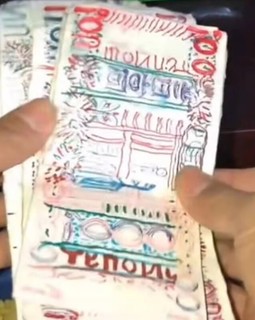 In 2020, a short video on Douyin, China's version of TikTok, of an elderly man clad in rags and struggling to communicate his desire to buy noodles brought the man, Zheng Zulong, and the noodle store owner Guose Li, instant fame.
In 2020, a short video on Douyin, China's version of TikTok, of an elderly man clad in rags and struggling to communicate his desire to buy noodles brought the man, Zheng Zulong, and the noodle store owner Guose Li, instant fame.
Misfortune, on the other hand, always seems to find its way to the already downtrodden. Zheng died in a drunk driving accident in January of this year, breaking the hearts of many people online.
May he no longer live a wandering life in heaven,
a person commented.

